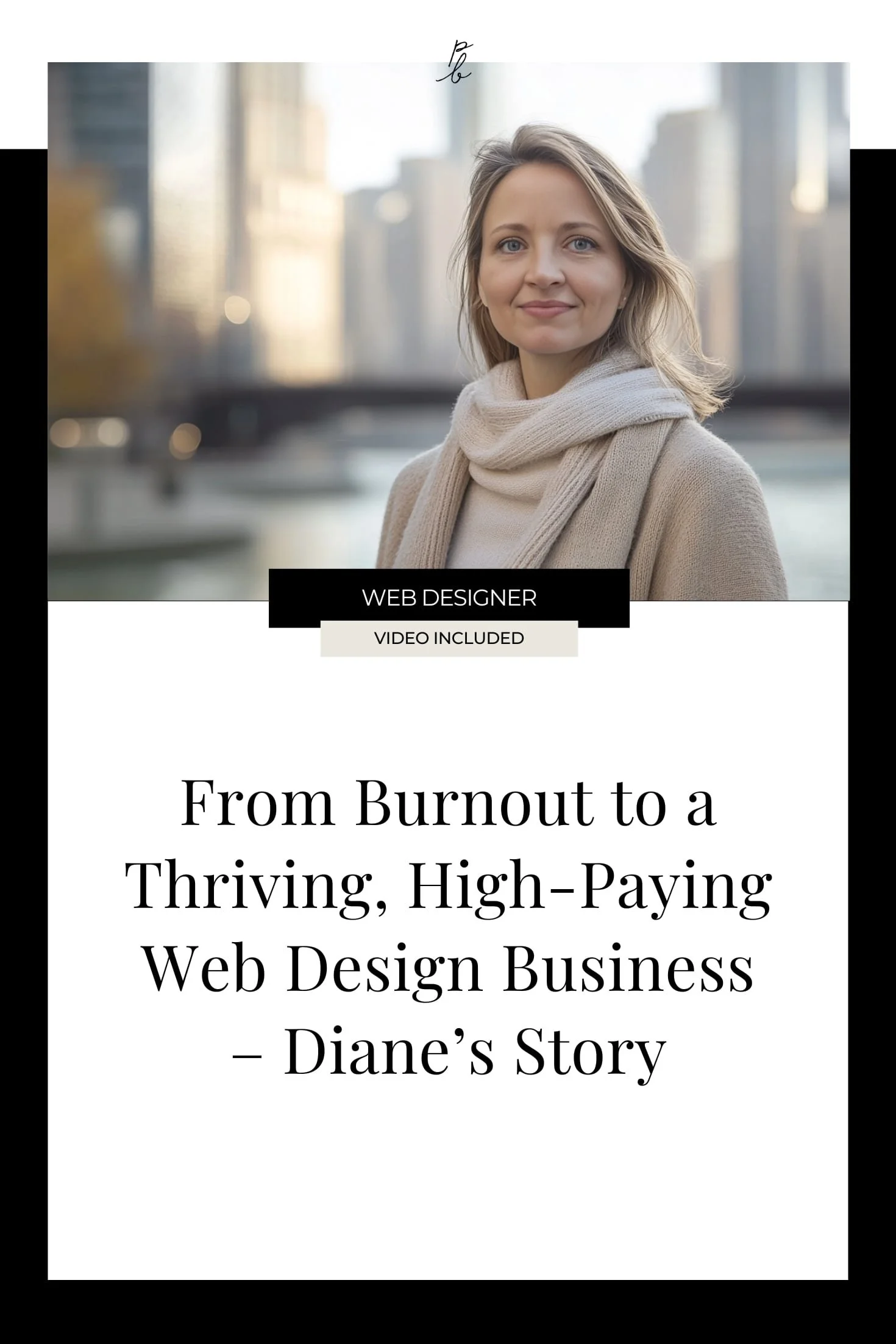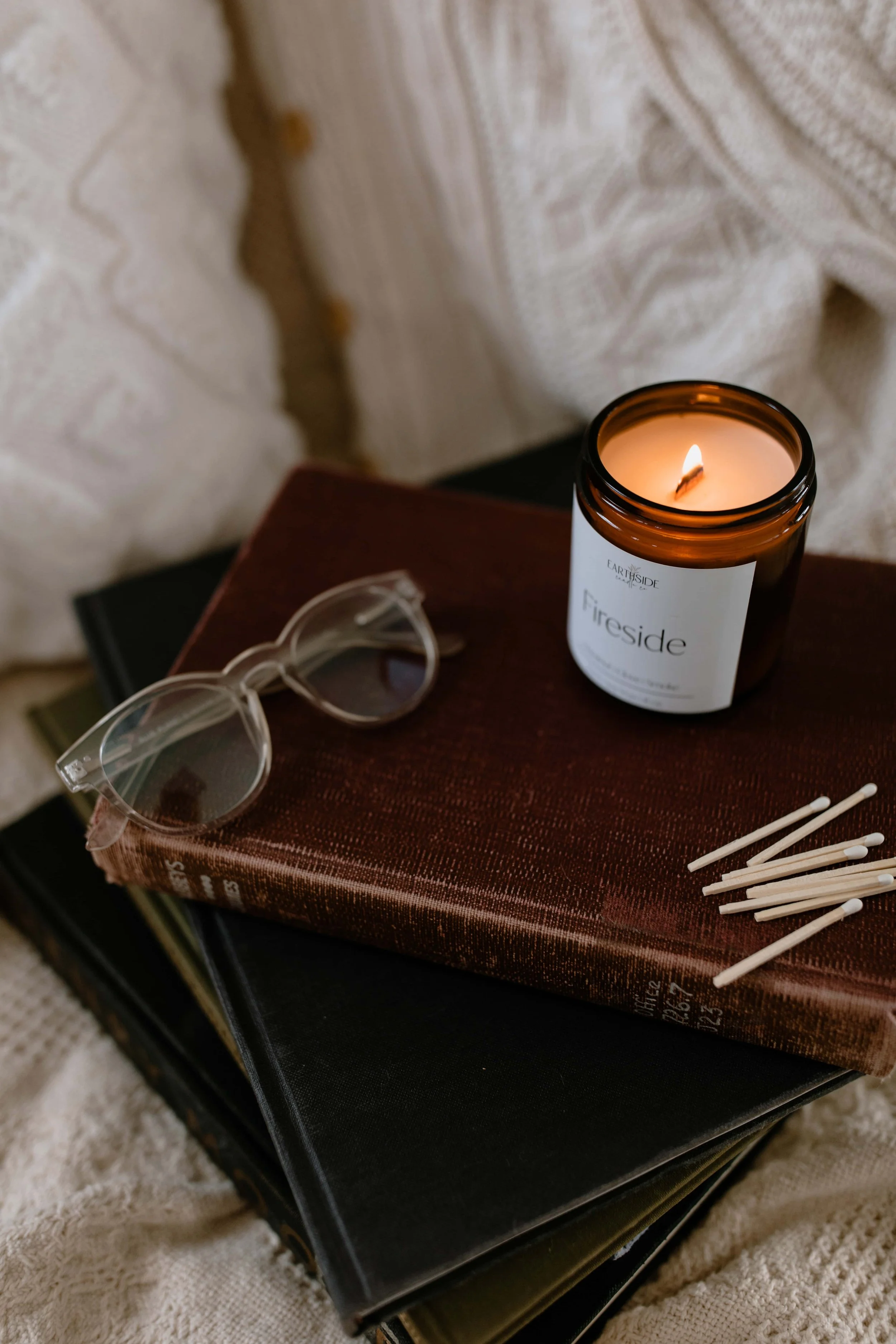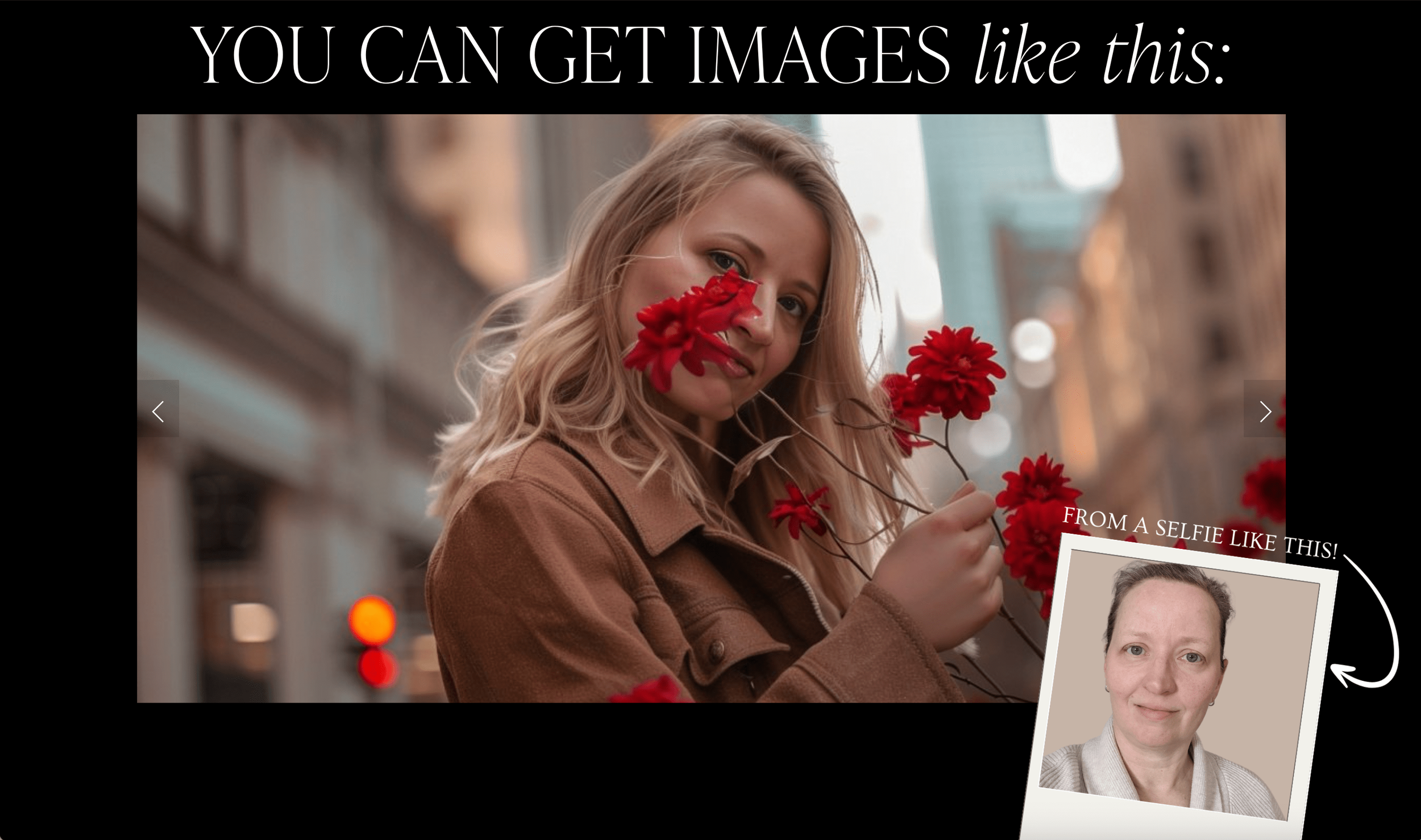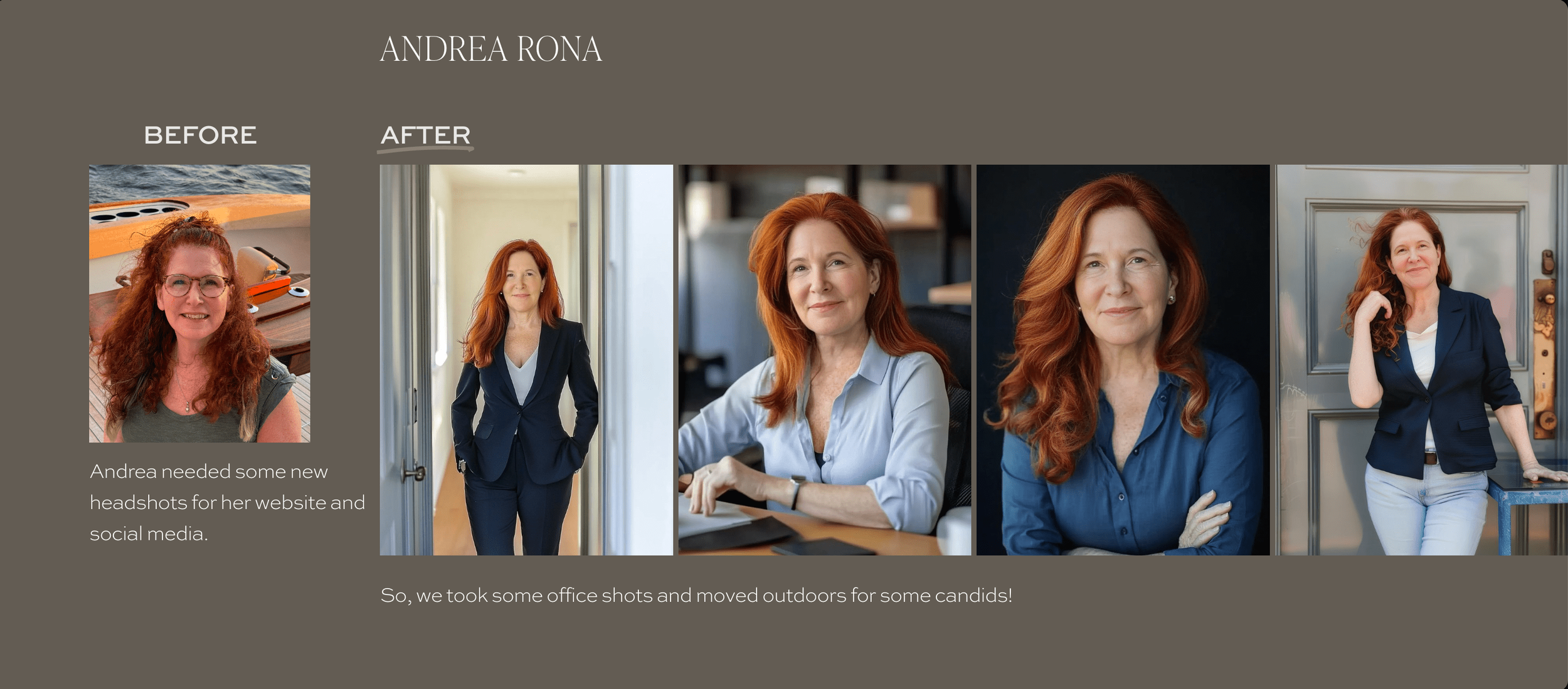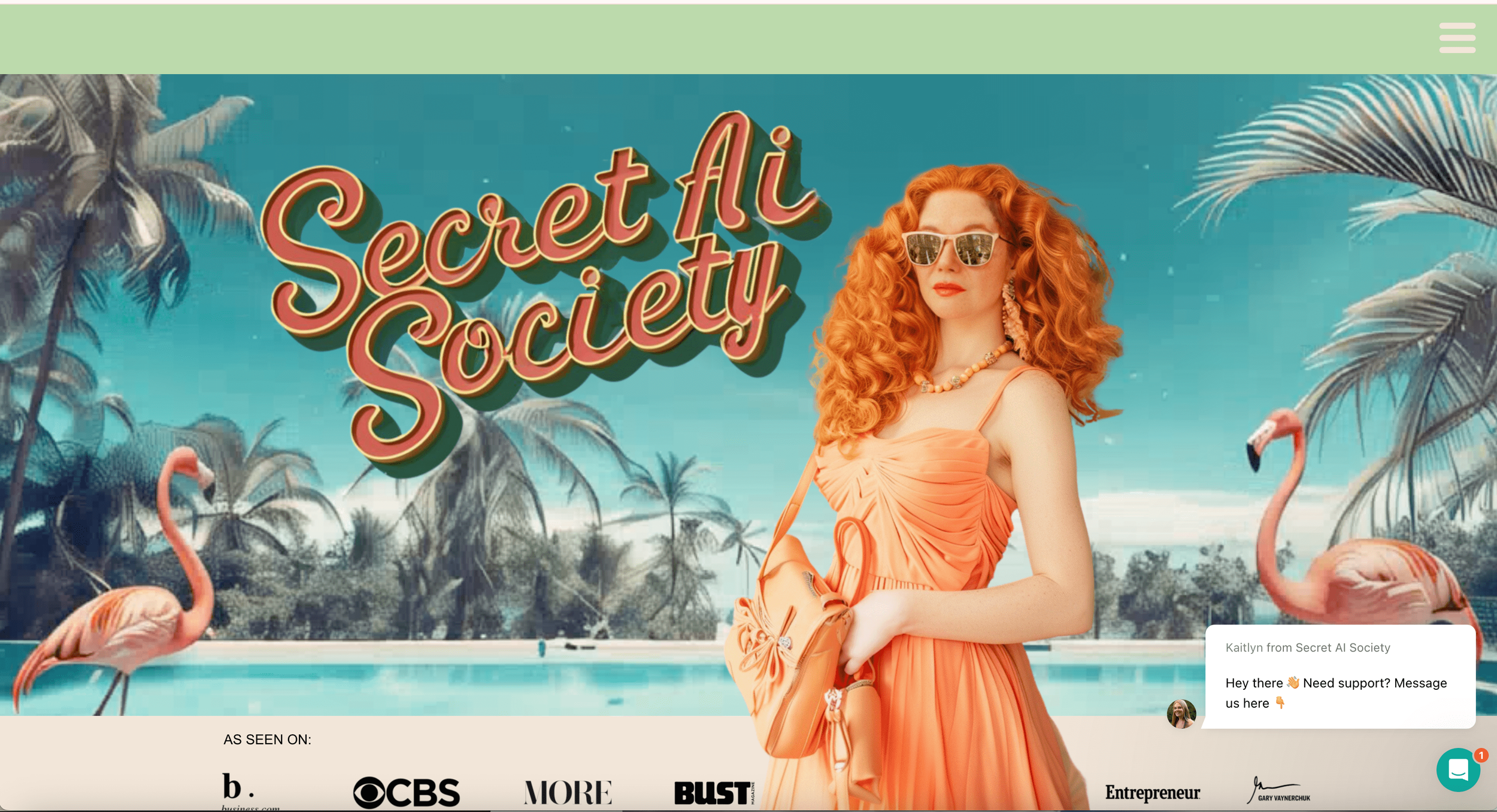From Burnout to a Thriving, High-Paying Web Design Business – Diane’s Story
Prefer to watch?
Here’s the video!
Mentioned in the Video:
*Yup - that’s an affiliate link! My margarita fund thanks you kindly!
Rather read all about it?
Have you built a business that now makes you feel like a prisoner?
Or are you afraid of creating yet another grueling 9-5 job for yourself?
Diane did exactly that. She was a web designer 20 years ago but started hating the web design business she had built—so much so that she shut it all down and switched to coaching and marketing instead.
Years later, she missed designing. She missed building websites.
Then, she came across a course that opened her eyes to building a business in a different, life-centered way.
Now, she's fully booked with projects, loving her clients, loving the websites she’s creating, and loving the lifestyle she’s built.
Peek Diane’s website here!
What made all the difference? How did she go from hating her first web design business to absolutely loving her second?
Read this incrdible interview for all of that, plus a genius marketing strategy, how she’s commanding $1,750 per day as a designer, and how she hit $50k in web design income at record speed!
So Diane, what were you doing before you became a web designer?
I was a WordPress website designer, but it was honestly not fun at all, and I hated it. Still, I built an agency with about nine employees and lots of clients. From 2006 to 2015, I ran that business, and I didn’t even go to school for design! I just kind of fell into it.
I started designing websites for writers, and eventually, it was paying better than writing novels I never finished, so I stuck with it.
But by 2015, I hated the work, so I sold the business. I tried business coaching and marketing consulting after that, but it was exhausting. I burnt out in 2019 or 2020. I tried all sorts of things—e-commerce, Amazon selling—you name it. Nothing worked.
Then I found an expensive coaching program that promised to teach high-ticket group coaching. But as soon as I got into the content, I realized it wasn’t for me. I started thinking, What do I really know?
And it hit me—I know web design and online marketing. That’s when I discovered Squarespace, just two days after they released Fluid Engine. It was a game-changer.
I found your work, read all your blog posts, and thought, I can do this again in a way that won’t exhaust me. No more code, no more hosting headaches, just design and marketing, which I love. I hung out my shingle at the end of 2022, and last year, I really committed to seeing if I could turn it into a business.
And here we are—I’m loving it!
What were your main frustrations with your previous business? Was it the agency model or WordPress itself?
It was both.
I’m not cut out to run an agency. I don’t like managing teams or the admin work. I’m all about marketing, psychology, and design.
The further I got away from that, the more miserable I was. Even running a “successful” agency, I wasn’t making enough money because I didn’t know about things like Profit First back then. So, I wasn’t happy with the business side of things.
But the real issue was that I hated the product.
WordPress, in my opinion, gives a terrible customer experience. It’s expensive to build and even more expensive to maintain. Clients had to keep paying for hosting, security, and plugin updates, and I never felt good about what we were delivering.
Why did you choose to take my courses when you already had experience?
I loved your content and approach. It was so different from everything I’d learned in the past. The idea that you could build a website in two weeks blew my mind.
I’d been in the WordPress world where sites took forever, and here you were saying you could do it in two weeks! That approach really resonated with me, especially the one-client-at-a-time model, which my neurodivergent brain loves.
I was also insecure about my process. I knew how to design, but I didn’t feel confident in the logistics—how to onboard clients, get their content, etc. Your course gave me the structure I needed to feel secure in what I was doing.
What made running this business easier and more joyful for you?
Beyond the course, your content and recommendations, like the book Profit First, changed everything.
I learned to run a lean business, only investing in tools or help when necessary.
Now, I have more energy to care for clients, and they love the VIP treatment and that I’m fully focused on them.
How did you find clients for this business so quickly?
I was lucky. I had a stack of old clients from my marketing consulting and website design days.
I’ve also done a lot of public speaking in the WordPress world, so I already had some visibility.
Once I hung out my shingle and posted a few blog posts, clients started coming in. I know it’s not that easy for everyone, but speaking and building a personal brand helped me a lot.
When I first sold my website design business, I immediately started giving free workshops every month for three and a half years.
That helped me build trust and get traction. If I were giving advice to someone, I’d say find what you care about, what you’re good at, and what’s easy for you—whether it’s speaking, blogging, or webinars—and go all in on that.
Tell me about your pricing journey. You've hit some impressive milestones in terms of revenue.
What did you start charging, and what are you charging now? How long did it take to reach $50K?
I launched my site just a couple of days after Thanksgiving in 2022, and I was in this weird spot because, you know, I had been charging thousands of dollars for websites, but after so many years, I didn’t have a portfolio anymore.
I wasn’t putting my old WordPress sites in my portfolio—they were outdated anyway. So, I wasn’t sure what to charge.
At the time, I had been doing business consulting at $250 an hour, so I kept that rate for coaching. For websites, I started at $2,000 because I wasn’t even sure I’d stick with it. I thought, Let’s just see how this goes. After every few clients, I’d raise my prices by $500. The last couple of rounds, I increased them by $1,000.
The funniest part?
I got my first client within two days of launching my site. It wasn’t even finished—I knew Google wasn’t going to find it in two days, so I wasn’t worried. I was still tinkering with it.
Two days later, someone purchased a website review. I was like, Who are you? Where did you come from? Turns out, she found me through an old brochure I’d advertised in over ten years ago! I had set up a redirect from my old site to my new one, so even though I wasn’t offering marketing consulting or WordPress design anymore, she saw my site and booked a website review.
Then, she purchased a $3,000 package to update her site.
Tell me about your different offerings.
I offer website reviews, which are prerecorded audits where I walk through a client’s site and give them advice. It’s kind of a loss leader, but it almost always leads to business.
My basic website package starts at $5,500, and I also offer a day rate of $1,750, which is seven hours of work in one day.
However, I sometimes stretch it out over two months if clients want more time to think about things.
Another offering I’ve started is AI photoshoots.
AI photoshoots? Tell us more—I’m curious!
I’ve recently started learning AI and illustrator, specifically how to copy someone’s likeness. It’s been a game changer because, as you know, it can be really hard to get good quality photos from clients.
The photos make or break a website, and if they’re bad, there’s only so much I can do with design.
With AI, I can create photos of clients, but I can also generate images of their office or space.
For example, I had a client who said,
This is my current office, but here’s what I want it to look like.
So I made the changes through AI to match her vision. Now she has photos of her in that office, which she can use on her website, and we can even take elements from those images and use them as design details throughout her site.
It opens up so many possibilities for customization and design.
Check out more of Diane’s AI Photoshoot portfolio pieces here!
What tools are you using for this? Did you teach yourself?
I took Jana Swords’ class, The Secret AI Society. The bulk of my work is done in MidJourney, but there are actually about five to eight programs I use to get the faces just right.
Interesting! I tried it myself a while ago, and the faces weren’t quite right. Has the technology improved?
It’s definitely an art and a science. And yes, it’s gotten so much better in just the past two or three months.
Walk me through the timeline—so, it was Thanksgiving when you decided to start. How did you get those initial portfolio pieces?
I basically copied a few WordPress sites and threw up some stock images. Then, I dove into Squarespace because I was determined to get into Squarespace Circle. I was like,
“You’re not keeping me out of this!” 😂
So I designed three sites just for me and made those live.
My first client hired me not long after, so I had her site in my portfolio.
Then by February of the next year, I was already charging $2,500 per project, and then last year, I bumped it up to $4,500.
Did you niche down, and what’s your take on whether designers need a niche to be successful?
That’s such an interesting question! I mean, I get the power of niching, but honestly, Squarespace itself is kind of a niche.
And I’ve been so surprised by how loyal people are to the platform. In the WordPress world, some clients were committed, but with Squarespace, people are like,
“I’ve had all my sites here, and I’m never leaving!”
So just calling yourself a Squarespace web designer gives you a lot of traction. Back when I lived in Boulder, Colorado, all my clients were healers—therapists, Reiki practitioners, massage therapists—all that woo-woo energy. But it’s been expanding.
Now I’m getting national speakers and executive coaches, which feels good. I think for me, being a Squarespace designer is enough of a niche.
I tend to work with women-owned businesses, especially coaches and consultants. But honestly, I’m not super picky.
My big qualifier is: if you love what you do, we’ll speak the same language. That’s what matters to me.
Tell me about being your own boss. What’s it like?
Oh my gosh, I love this question! This is like my love letter to you, Paige!
One of the reasons I adore your content is because you gave me permission to run my business my way.
Your story of being in Germany, unable to network because you didn’t speak the language, and just deciding to blog—it really stuck with me.
You broke so many rules, and it inspired me to do the same.
For example, I don't talk to clients on the phone—like, ever. We’ll do a discovery call, sure, but after that, it’s all Voxer or WhatsApp. Phone calls drain me, and I hated that in my old business.
Back then, I had an in-person office, and I’d have to get dressed up, do makeup, and be all formal. I felt so disconnected from myself.
Now, I’ve built the business I want. And I’ve been really careful about how I pace myself. If I start feeling that burnout creeping in again, I’ll stop. No hesitation. I’d rather work at a grocery store than put myself through that again.
Every process I have now, I’ve designed around me.
No phone calls, no in-person meetings, and minimal Zooms. We use Loom videos a lot, which is my favorite tool ever.
I can communicate effectively without draining my energy.
Being my own boss means creating a business that doesn’t drain me but energizes me instead.
And I truly believe that if a business model works for you, it’ll work for your clients, too.
There’s an audience out there waiting for you to deliver what you do in the way that only you can. You champion that message, and it’s one of the things I love most about your content.
Give me a typical day in your life. What does working for yourself as a designer look like?
I usually wake up around 7 or 8, do my yoga, and then I just do whatever I need to for the day.
Sometimes I’ll journal. I like to give myself some me time in the morning so I don’t feel rushed. If I dive into emails right away, I go a little nuts. So I try to protect that brain space first thing.
I usually spend the first part of the day, up until lunchtime, working on my stuff—whether that’s creating content, revamping admin processes, or handling things for me and my business.
Then the afternoons are all about client work.
Fridays are usually my time off, or I’ll use them to work on other projects I’ve got cooking.
I don’t usually work late at night. But if I do, it’s more like consuming content or learning something new—taking a class or digging into something fun.
How long does a website project take you? Are you using the 2-week model?
I keep trying to steer clients into that two-week process, but it’s still a bit of a learning curve for me.
Some clients need more time, and honestly, that’s fine. As long as I’m getting paid, I’m flexible. They can take their time.
How long does a website take you now that you’ve been doing it for a while? Obviously, in the beginning, it takes longer, but what’s your process now?
Okay, so I’ve actually done a lot of research on this recently because I kept thinking,
Am I just really bad at this?
I thought, once I get going in Squarespace, I’d be able to knock out a site in, like, 12 hours. But nope, that’s definitely not a thing—at least not for me.
I tracked all my hours and even interviewed other designers, and for me, it takes around 40 hours from start to finish. That’s from the discovery call to the final launch.
And after talking to a lot of reputable designers who do really great work, they all had very similar timelines. No one was doing it in less than 35 hours.
There’s just so much behind the scenes—making sure the site is mobile-responsive, that everything works as it should, and providing all the materials clients need after launch.
So yeah, around 40 hours is pretty reasonable, in my opinion.
Totally! If you spread that over two weeks, that’s only about half your workweek for both weeks. So, really not too bad, right?
Exactly! I mean, when you break it down, it’s totally manageable. It’s just all those little details that add up. And that’s why my pricing is what it is—it reflects the time and effort it really takes.
Any advice for someone who wants to do what you’ve done? What would be your top tips or things you wish you’d known before starting out?
The biggest thing is, there’s no one right way to build a business. You’ve got to do it in a way that works for you.
Sure, do your research, ask for advice, learn from others—but at the end of the day, you need to listen to yourself. Build the business that’s right for you.
If I’d done that 20 years ago, things would have been so different.
Another thing: work on your fear of rejection.
That’s something that held me back a lot. Marketing is all about putting yourself out there, and it’s just a numbers game.
You’ll host workshops with barely anyone showing up, and you’ll create posts that get zero engagement. But you keep doing it anyway.
Even the most successful people out there? They’re hustling just like you, making it happen.
No one’s sitting back, effortlessly pulling in clients without putting in the work. So if you’re passionate and you want it, trust yourself and go for it.
Lastly, set yourself apart from your competition. Give people a reason to choose you. If you can’t clearly articulate why you’re the better choice, you’ll end up competing on price—and that’s not a great way to build a business.
How do you set yourself apart from your competition?
My strategy has always been to focus on what I know best—marketing.
Especially coming from the WordPress world, there are so many people who can code, but they don’t really know how to market or create a strategy.
Sure, they can build you a website, but should they? Is it going to get the results you want?
No one wants a website just to have a pretty piece of art. People want their site to do something, usually make them money!
That’s where I stand out. I’ve been doing this since 2006, so I understand customer journeys. I know how to build a website that’s not just a brochure, but a three-dimensional experience that guides visitors through to the action you want them to take—whether that’s signing up for something or buying a product.
One of my secret phrases is: results-driven websites. It’s such a simple concept, but it sets you apart because a lot of designers are scared to promise results.
I get it, we can’t guarantee what’s going to happen. But when you start the conversation with, “My websites are designed to get you sales, sign-ups, or whatever goal you have,” people see you differently.
What’s your take on whether it’s too late to become a web designer? Is the industry oversaturated? And you’ve been doing this for 20 years, so you’ve really seen how things have evolved.
Oh, it’s such a different world now. Back when I started, you had to convince people why they even needed a website! No one knew what a website was for or why it was important. Nowadays, people get it. They know they need a website. So, that whole education part? It’s done.
And with the rise of work-from-home jobs and big companies hiring contractors instead of employees, more people than ever are starting their own businesses. That means more people need websites—like, a lot of websites! I really don’t see any slowdown in the market.
If anyone’s thinking, “Maybe this isn’t a great career path anymore,” my answer is, Jump in—the water’s warm! Seriously, there’s so much opportunity here—come join the fun!
When I started, people didn’t really know what Squarespace was, and I had to explain why it was better than WordPress.
But now? Everyone’s fed up with WordPress. They’re sick of paying for maintenance, dealing with plugins breaking, and all the constant updates that mess up their sites.
WordPress was the only option for a long time if you were serious about a custom website, but not anymore. Now, with drag-and-drop platforms like Squarespace, it’s a completely different ballgame.
So, not only is the market bigger, but all those WordPress users are looking for a way out.
What was your favorite part of the Square Secrest Business™ course?
Hands down, the student Q&A calls.
I love the calls!
It’s amazing to hear you and Katelyn bouncing ideas off each other.
There’s something so valuable about that brainstorming process—like when you share your experiences and what’s worked in the past. It makes everything feel real and relatable.
As a web designer, it can feel pretty solitary sometimes. Even if you have a team, no one else is taking on the same risks or making all the big decisions.
It’s tough! So, when I join those calls, it’s like a weight is lifted. Someone will ask a question, and I’m like,
“Oh, thank God! That’s exactly what I’ve been dealing with,”
and then you guys are like,
“Here’s how you handle that,”
and I’m sitting there thinking,
“Yes! Thank you!”
The camaraderie on those calls is something I didn’t realize I was missing until I had it. It’s become a highlight of my day.
Final question—if someone’s on the fence about taking one of the courses, what would you say to them?
I’d say: Please, take the course!
But here’s my caveat—first, figure out who you are and what you want. That’s the most important thing. You’ve got to know what you want out of this before diving in.
But if you’re at a point where you’re thinking,
“I really want to do this,”
then the course is exactly what you need.
It’s not different from Paige’s free content—so if you love her content, her message, and her values, then you’ll love the course.
It gives you the structure you need to approach running a business, plus all those key starting pieces to get your head on straight and hit the ground running.
I honestly think it’s such a good shortcut to success, especially for getting your first client. It’ll happen so much faster with the roadmap the course provides than if you try to do it all on your own.
As you heard from Diane, speaking and hosting workshops was a major part of her marketing strategy. And maybe that’s right for you, but maybe it’s not.
On the 21st, 22nd, and 23rd of October, I’m hosting my ever-popular free event, the Profitable and Productive Webdesigner Bootcamp.
During this event, we’ll be discussing your marketing strategy options and picking the right one for you.
Bootcamp is the same event that Diane attended when she was curious about taking her website business to the next level before joining my courses.
Bootcamp is full of the loveliest, most supportive crowd, and we always have a wonderful time together.
But it’s not just fun—students in my community get real results.
Some of them, including incredibly successful students like Diane, will be joining Bootcamp to drop some amazing business-building lessons of their own. These students are designing lifestyle-first businesses, and they’ll share exactly how they’re doing it inside Bootcamp.

